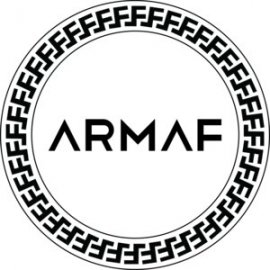In the realm of entertainment, capturing and maintaining audience attention is a perpetual challenge. One powerful technique that transcends genres and mediums is fast-paced action. This dynamic approach propels narratives and gameplay with rapid stimuli, heightening emotional stakes and immersing viewers and players alike. From ancient mythological tales to cutting-edge video games, the use of swift, intense sequences has proven essential for engaging modern audiences.
This article explores how mythology and contemporary gaming leverage fast-paced action, examining psychological impacts, storytelling foundations, and design techniques. By analyzing examples from mythic stories to modern titles like check the controls, we uncover the timeless principles that make action sequences compelling across eras.
- The Psychological Impact of Fast-Paced Action on Audience Engagement
- Mythology as a Foundation for Action-Packed Narratives
- Modern Video Games as a Continuation of Mythic Action
- Case Studies of Fast-Paced Action in Games
- Bullets And Bounty: A Modern Illustration of Action Engagement
- Designing for Engagement: Techniques Used by Mythologists and Game Developers
- Non-Obvious Aspects of Fast-Paced Action
- Future Trends: Evolving the Use of Fast-Paced Action in Mythology and Games
- Conclusion: The Enduring Appeal of Fast-Paced Action from Myth to Modern Games
The Psychological Impact of Fast-Paced Action on Audience Engagement
Rapid stimuli in entertainment—whether in mythic narratives or modern games—trigger a surge of adrenaline, sharpening attention and heightening emotional responses. According to neuroscientific research, fast-paced sequences activate the sympathetic nervous system, leading to increased heart rate and alertness. This physiological reaction creates a state of heightened engagement, making audiences more receptive and emotionally invested.
Suspense and immediacy further amplify this effect. When viewers or players perceive that outcomes are imminent and actions are occurring rapidly, their sense of involvement deepens. For instance, mythological stories often depict heroes in relentless pursuit of a goal amidst chaos—think of Hercules battling monsters or Odysseus navigating perilous seas. These narratives leverage suspense to maintain interest. Similarly, games deploy quick-time events, fast combat mechanics, and unpredictable enemy behavior to sustain tension, as seen in titles like check the controls.
Mythology as a Foundation for Action-Packed Narratives
Traditional mythologies across cultures emphasize themes of heroism, conflict, and divine intervention. These stories often feature protagonists undertaking perilous quests, battling formidable foes, and overcoming insurmountable odds—elements inherently suited to fast-paced storytelling. For example, the Greek myth of Perseus slaying Medusa involves relentless pursuit, sudden combat, and decisive action, engaging audiences through dynamic sequences.
Mythic themes serve as templates for creating compelling, fast-moving tales. They evoke universal archetypes such as the hero’s journey, which emphasizes trials, conflicts, and triumphs. Modern adaptations—whether in literature, movies, or games—continue to draw from these motifs. The transition from myth to contemporary storytelling often involves emphasizing action sequences that mirror ancient conflicts, thus preserving their energy and appeal.
Modern Video Games as a Continuation of Mythic Action
Video games have evolved from simple mechanics to complex, cinematic experiences that mirror mythic narratives. Early titles like Pac-Man and Donkey Kong introduced basic chase and combat sequences. Today, AAA titles incorporate intricate storylines with high-speed action, such as dynamic combat systems, rapid traversal, and cinematic cutscenes. This evolution underscores the importance of pacing in maintaining engagement.
Games often emulate mythic hero journeys through gameplay mechanics. For instance, the player’s progression from vulnerability to mastery echoes the hero’s trials. Action sequences, like intense boss battles or escape sequences, replicate mythic conflicts, fostering an immersive experience. The pacing—alternating moments of tension and relief—is crucial to sustain players’ interest and emotional investment.
Case Studies of Fast-Paced Action in Games
- Rust: This survival game pits players in resource battles within a post-apocalyptic setting, embodying a mythic struggle for survival and dominance. The constant danger and rapid encounters foster a sense of urgency akin to mythic conflicts.
- BioShock Infinite: Features dynamic movement via sky rails and mechanical horses, creating fast-paced, vertiginous conflict zones. These elements evoke mythic chase sequences and heroic pursuits in a steampunk universe.
- GTA Online: «Saloon Showdown»: This mode exemplifies rapid, competitive action with fast gunfights and quick reflexes, mirroring mythic duels and heroic combat. The swift pacing sustains excitement and adrenaline among players.
Bullets And Bounty: A Modern Illustration of Action Engagement
Bullets And Bounty exemplifies how modern games harness mythic principles through engaging, fast-paced gameplay. Its core loop involves dynamic combat, strategic bounty hunting, and real-time decision-making, creating an environment where quick reflexes and tactical thinking are essential. As players navigate rapidly changing scenarios, they experience a narrative rhythm reminiscent of mythic hero quests—constant movement, conflict, and adaptation.
This game demonstrates how continuous action maintains immersion, fostering a sense of heroism and mastery. For those interested in mastering such mechanics, understanding check the controls can offer valuable insights into designing or engaging with fast-paced titles effectively.
Designing for Engagement: Techniques Used by Mythologists and Game Developers
Both mythologists and game developers employ techniques to craft compelling, fast-paced narratives. Narrative pacing involves alternating moments of intense action with quieter, reflective periods, creating a rhythm that maintains interest without overwhelming. Visual and auditory stimuli—such as rapid camera cuts, impactful sound effects, and vibrant visuals—heighten excitement and immersion.
Balancing challenge and reward is critical. Difficult sequences motivate players to improve, while rewarding successes reinforce engagement. For instance, successful combat or navigation through perilous environments triggers dopamine release, motivating continued play and emotional investment.
Non-Obvious Aspects of Fast-Paced Action
- Cultural Significance: Mythic motifs—such as heroism, divine intervention, and epic battles—are deeply embedded in game design. They resonate universally, providing familiar frameworks that enhance engagement across cultures.
- Psychological Effects: Continuous action can boost motivation, provide escapism, and foster a sense of achievement. However, overexposure risks overstimulation and burnout, making ethical considerations vital in design.
«The key to capturing audiences lies in rhythm—balancing high-speed action with moments of pause that allow reflection and anticipation.» — Expert Game Designer
Future Trends: Evolving the Use of Fast-Paced Action in Mythology and Games
Emerging immersive technologies such as virtual reality (VR) and augmented reality (AR) promise to revolutionize fast-paced storytelling. By integrating mythic themes with real-time, high-speed interactions, developers can create deeply engaging experiences that feel visceral and immediate.
Additionally, blending mythic storytelling with interactive media offers educational benefits, aiding cultural preservation and transfer. For example, VR reenactments of mythic battles can foster understanding and appreciation among new generations, ensuring these stories endure in a rapidly changing technological landscape.
Conclusion: The Enduring Appeal of Fast-Paced Action from Myth to Modern Games
Throughout history, storytelling has thrived on the energy of dynamic sequences. Mythology laid the groundwork by emphasizing heroism and conflict, which modern games have adapted into sophisticated, high-speed gameplay. This cyclical relationship highlights the timeless human fascination with action, challenge, and triumph.
By understanding the principles behind effective pacing, stimuli, and narrative rhythm, creators can craft experiences that captivate diverse audiences. The example of check the controls illustrates how contemporary titles continue this tradition, blending mythic archetypes with innovative gameplay mechanics. Ultimately, fast-paced action remains a vital tool for storytelling—both ancient and modern—fostering engagement that endures across generations.


































